Book Review of White Fragility (Pt. 1/4)
If you’ve ever attempted racial equity work in schools, you have seen how white fragility can torpedo the whole plan. What is it and what can you do about it?
This is the first of 4 parts.
Part 1: Background knowledge about the book
Part 2: What Leaders can do about White Fragility
Part 3: A White Leader’s reflection on addressing White Fragility
Part 4: What schools without White Fragility could look like
White supremacy.
Yup. I said it.
Ok, now that that’s out of the way, we can talk about why that term makes most of us disconnect, disengage, and get defensive.
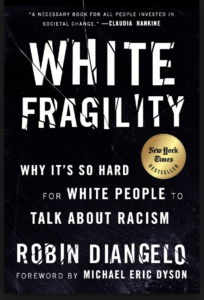
White Fragility Defined
In her book White Fragility, Robin DiAngelo’s explains the term, to white folks, “…we haven’t had to build our racial stamina…we become highly fragile in conversations about race…The smallest amount of racial stress is intolerable–the mere suggestion that being white has meaning often triggers a range of defensive responses. These include anger, fear, and guilt and behaviors such as argumentation, silence, and withdraw from the stress-inducing situation. These responses work to reinstate white equilibrium as they repel the challenge, return our racial comfort, and maintain our dominance within the racial hierarchy” (pg. 2).
Ok, why does this matter?
This racial stamina manifests itself in white folks checking out of the conversation, shutting down, calling ‘reverse racism’, and finding any way to avoid, ‘the real work.’ My two favorite parts of DiAngelo’s description is that white fragility comes from a place of weakness but using it re-establishes a place of power.
White Supremacy and White Fragility
DiAngelo also writes, “Naming white supremacy changes the conversation in two key ways: It makes the system visible and shifts the locus of change onto white people, where it belongs. It also points us in the direction of the lifelong work that is uniquely ours, challenging our complicity with and investment in racism” (pg. 33).
Thank you woke white woman!
It’s important to know what we are working with, or better working against. Our work is not about diversity, inclusion, sensitivity, or awareness. Instead, we need to address white supremacy and the oppression of people of color.
This requires us working towards liberation.
So, don’t sugarcoat it, to make it palatable to white folks, or privileged folks. That is the wrong medicine so it won’t cure the problem of white supremacy. Let’s call it like we see it.
For the next level of work, check out this post on Dismantling White Supremacy Culture.
Emotions and Behaviors of White Fragility
Towards the end of the book, on page 119, DiAngelo names the emotions (attacked, singled out, silenced, shamed, guilty, angry, scared, outraged) and behaviors (crying, walking out, denial, arguing, withdrawal) of white fragility.
This knowledge allows us to be prepared when it happens, explore it using probing questions or redirect folks to our agreed upon brave norms. Hell, we might even forecast White Fragility as a possible side effect so white folk have the opportunity to self-regulate and stay engaged throughout the conversation.
Other Highlights from the Book
Robin DiAngelo surveys selected acts of racisms throughout history, during slavery, post-civil rights era, and in current events. Read “Stamped from the Beginning,” by Ibram Kendi for a deeper and POC version of this history.
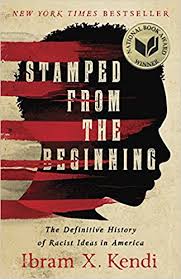
Or better yet, check out my list of 24 Anti-Racist Books, for your next Book Club!
This knowledge and history is important for anyone who needs a primer on the socio-political context of our world. DiAngelo also breaks down anti-blackness and the many interpretations of whiteness throughout the years.
In Chapter 5, ‘The Good/Bad Binary,’ she gives us ways to reframe common attempts for white folk to check out of or hijack the conversation. There are ways to respond to common phrases like “I marched in the sixties,” “I was taught to treat everyone the same,” and “Focusing on race is what divides us.” These are powerful facilitator moves to use when engaging a school staff in conversation about race.
In Chapter 8, DiAngelo writes how white folks “don’t feel safe” or “are under attack.” She continues to say that, “past efforts to address the lack of diversity have resulted in trauma for white employees.” TRAUMA. White folk, that is not trauma.
That is discomfort.
Enslaved Africans experienced trauma. Soldiers experienced trauma. Students growing up in crime, violence, and poverty experience trauma. School staff of color, actually experience daily microaggressions, ‘death by a thousand cuts’. That’s trauma. For POC (without the power to inflict institutional racism) to point it out and have it flipped into “trauma,” is further trauma. Let’s break the cycle!
Thanks, DiAngelo for calling it out and suggesting that white folk need to do their own extensive work.
Reflections from a White Racial Equity Leader
Rachel Rosen, a Racial Equity Leadership Coach shares, “As a new teacher, I didn’t have the tools to talk about my whiteness. I had worked so hard to get to where I was and I felt pained and confused when I realized I had lived so much of my life in the dark—not talking about race. It was twelve years ago, but I’m sure I was defensive and dismissive at times. I didn’t think I had the bandwidth for more self-reflection. I did. Over the past seven years, I have lived and lead differently, AND the more I learn, the more I have to learn.”
“If I could go back in time and give my former self some advice, I’d say, ‘buckle up. You wear an invisible cloak of privilege, and it impacts people’s’ experience. This awakening journey will be full of mistakes, challenges, and imperfections. You don’t have a lot of practice navigating race, so there will be moments when you feel guilty, shameful, and sad. That’s our work and burden to carry.'”
Check out Rachel Rosen’s work if you are looking for resources or coaching for Racial Equity work. She is all about creating a community to unpack and deconstruct this work. Her S.P.A.R.K. game is pretty cool too!
Conclusion
This work is for white folk to do. In schools this means, that white teachers, staff, and leaders need to do/lead this work. White leaders can be culturally responsive too! More tips in the next part of this series Furthermore, gone are the days of POC leading white folks in developing their social consciousness at the expense of POC and the continued oppression. As a leader, I have definitely been a victim of this TOO many times to put on my resume or discuss with my wife. So, gone also are the days of organizations avoiding the work of liberating our students from white supremacy and institutional oppression.
By White Fragile Felicia.
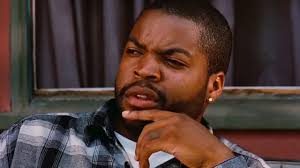
DiAngelo eloquently writes that she strives to “be less white…less racially oppressive…more aware, to be better educated about racism, and to continually challenge racial certitude and arrogance…to be open to, interested in, and compassionate toward the racial realities of people of color…to break with white silence, and white solidarity, to stop privileging the comfort of white people over the pain of racism for people of color, to move past guilt and into action” (pg 150).
So be less white and be less fragile.
Be stronger, more resilient, and more educated.
Easier said than done, but consider it said.
Let’s keep the conversation going on social media (@trussleadership). Check out the next installment of this 4-Part Series, What culturally responsive leaders like YOU can DO about White Fragility.

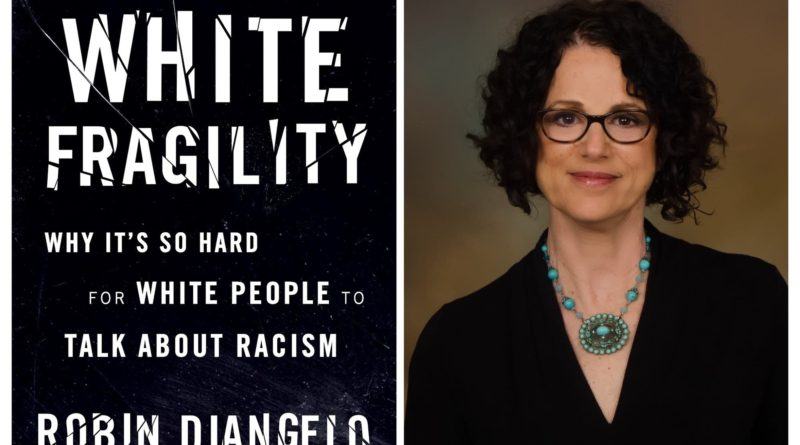
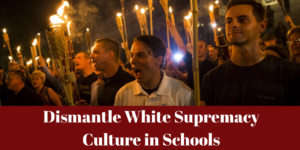
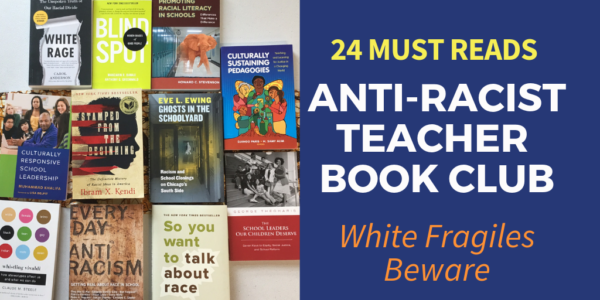
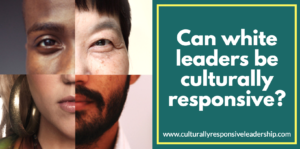
Pingback: Fallacies about Racism – Rachel's Musings